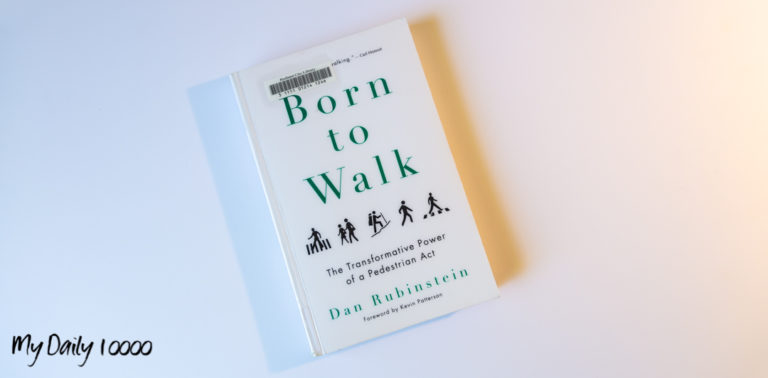A Parade of Fitness Trackers
Christmas day in 2014 was the start of something that I have kept going for just over five years now. It was on that day when I received the gift of a fitness tracker.
Ever since I have been walking daily and tracking the steps I take. As you might have noticed I share all of that through this website. I thought it about time that I share a little about the fitness tracker’s that I have used in this time.
The Ever Changing Tracker
The benefit of hindsight is something I would have loved to use in this situation. Over the last five years, I have used eight different fitness trackers. From new models for new features to the same model multiple times because of warranty replacements.
The fitness trackers have included: a Garmin Vivofit, a Fitbit One, 2 of the Fitbit Charge HR, Garmin Vivofit 3, 2 of the Garmin Vivofit 4 and a Fitbit Alta HR. Thinking back now though I probably should have stayed with the original Garmin Vivofit as long as possible. Especially since the original Garmin Vivofit still works perfectly today.
At the time I made the first change, I wanted to try something different. It was also around the time that I made the first version of this website. I wanted to have some reviews of other products available. At least being able to have a comparison between Garmin and Fitbit.
I never got around to the reviews I wanted to share. However, looking back there were plenty of stories. Everything from a review of the product out of the box to returning and replacing the fitness trackers. Obviously some of these stories are not the ideal things you want to share, but they likely would have been a good insight to people of potential flaws.
Using so many trackers though has given me one insight. Rarely is the best solution abandoning something that works. If you want to try different things it can be great jumping from one product to another. But if you want to just collect your data and keep moving, it is a much better idea to stick to one product.
The Trackers
Following you will find a little information from each of the six different model fitness trackers that I have used. There are three from Garmin and three from Fitbit. I will include the reason I picked a particular one and what caused me to change it for another model.
Garmin Vivofit 1
25 December 2014 – 18 July 2016
The Garmin Vivofit was the perfect fitness tracker to get started with. While some competitors at the time offered better features, it was hard to go past the one year battery life. Even now five years later I still have this fitness tracker and with a new battery it still works.
If I had not wanted to try something different, I likely would still use the Vivofit to track my steps. But as with many things having and trying something different got the better of me.
There were three problems that I found with the Vivofit. The first was the band, almost a year to the day since I got the fitness tracker the band broke. It was not a problem at the time as I had already asked for more for christmas in different colours.
The second problem I had was the lack of a back light. I used the fitness tracker for steps and as a watch. At night it was very difficult to read without getting it in the right light at the right angle. I survived though and managed to work around this, mostly.
The last and most frustrating problem I had at the time was the device synchronising. I do not believe this was a problem with the tracker, but more the interaction between the device, Garmin app and their central servers. The problem would usually resolve within hours or by the next day, but at the time it was very frustrating.
Fitbit One
8 July 2016 – 11 July 2016
I purchased the Fitbit One with no long-term intention to use it as a tracker. The price was right, and I thought it would be a good tracker to review that was not a wrist based tracker.
I purchased the Fitbit One at a good price, but quickly realised it was not a good candidate for a review. The reason for the good price was that they had discontinued the model. That made it a bad option for a review but a good choice to test out the Fitbit app with real data.
I found that the Fitbit One had a few flaws that would make it impractical for me. How it attached to your clothing instead of your wrist was a problem. It was easy to forget changing it if you changed clothes. There was also the chance of it falling off if it worked its way off where you attach it.
There was also a big problem I found with seeing the progress without dislodging it from where you were wearing it. Or getting to the device if you were wearing multiple layers.
While the Fitbit One did not stay with me long, it led to another Fitbit tracker for me.
Fitbit Charge HR
18 July 2016 – 6 June 2017
After trying the Fitbit One, I looked for another Fitbit option to use as a tracker. To me, the Fitbit app was a more appealing option and with some new tracker’s there was more data available.
The tracker I chose was the Fitbit Charge HR. There were two factors that played into this decision. The first was the price, they discounted it as it was a superseded model like the Fitbit One. Second, it offered a feature to track heart rate, which was interesting to me. Although that feature turned out to be rather useless for me as I never looked too closely at it.
As a fitness tracker, there were no real faults that I could find with the Fitbit Charge HR. The step tracking was good and fairly accurate. There were no issues I recall connecting the tracker to the app. While the Fitbit app proved much more user friendly, then the Garmin Connect App.
I had one big issue with the Fitbit Charge HR, and that was the strap to hold it to the arm. They moulded the strap and tracker into one piece that meant you could not change the strap. The problem was that the silicone strap peeled away after just a few months.
I let it go for a little while, but it was obvious I would need to contact Fitbit support. Fitbit support was great, and it was one of the better after sales experiences I have had. I suspect they were well aware of the issue as I knew two others with the same problem. They arranged for delivery of a replacement and did not require me to send the original back.
The replacement looked like they made it from different material. It only took about five months to realise this was not the case. The same issue reoccurred, and I returned the store I purchased it from for an exchange to a new model.
Garmin Vivofit 3
6 June 2017 – 21 April 2018
The choice for my next fitness tracker was a return to Garmin. Even though I preferred the Fitbit app, I was not prepared to take a chance on their product quality again just yet. My choice was the Garmin Vivofit 3, an updated version of the first fitness tracker that I used.
The biggest positive in returning to the Vivofit model for me was the 1 year battery life. A feature they still maintained while adding a back light, which is one feature I would have liked in the original Vivofit.
It was very much looking like I had found my new long-term tracker. Then one morning I woke up and looked at the screen to see a black mark. I thought something must have got on the screen but it would not come off. When I looked closer, I could see it was a dead area on the screen.
It was time to give Garmin support a try, and the experience was not quite the same as Fitbit. They were very helpful and were very willing to help to a degree. However, they wanted the device returned for inspection before providing a replacement. The expected turn around would be 2-3 weeks. I have no issue with returning the device to Garmin, but how do you track your steps without a device. The solution I went for was returning to the store I purchased it from and exchanged it for a new model.
Garmin Vivofit 4
21 April 2018 – 24 March 2019
When I returned the Garmin Vivofit 3, that model was no longer available. I considered my other options but ended up choosing the Garmin Vivofit 4 as it was the only option the store had available. They did not stock any Fitbit models and only had a small range of Garmin.
While there were small differences between the Vivofit 3 and Vivofit 4, none were substantial. It was a forced upgrade rather than one for any features.
Again I thought I had myself a long-term option for a tracker. Everything went fine for right around 11 months. The device would reset randomly, sometimes losing step data. The screen would go blank and the Garmin logo would appear. Sometimes it would combine with a series of lines on the screen before going blank.
The first few times it was just annoying because it would just be a random time and it would lose some or all of the step data for the day. The Vivofit 4 soon became unusable though when the issue occurred at intervals between 5 and 30 minutes.
It was time to try Garmin support again, which resulted in answers very much like my previous experience with the Vivofit 3. I would need to send it back to them and wait 2-3 weeks for a replacement. They seem to have no care that we purchase the device for a purpose that requires daily use. I opted to send it in, as the store I purchased it from no longer stocked fitness trackers. But I ended up purchasing a new fitness tracker to use while waiting. Which leaves me with a spare Garmin Vivofit 4 sitting in the cupboard.
Fitbit Alta HR
30 March 2019 – Current
My choice to purchase the Fitbit Alta HR was a purchase motivated by price. I did not want to spend a lot on what may be an interim measure. I had covered two days using the step data from my phone. But I rarely carry my phone all the time when I am walking. To the Fitbit Alta HR was the right price to suit my needs.
The Fitbit Alta HR has turned out to be a good option. However, it has some flaws, that are substantial. The first and potentially most worrying is that the accuracy of the step tracking can be rather poor.
There have been cases where I will look at the tracker and see a step count. I will get up and walk at least 100 steps only to see no change in the count. Usually the discrepancy is not that bad, more like I will walk 20 steps and it will record only 10-15 of them. However, this is more often closer to when I first move. While I understand they do not guarantee the accuracy, for it to be this far out should be beyond the acceptable levels. The biggest problem is proving it.
The second aspect is the quality of the manufacturing. If you recall my first experience above with the Fitbit Charge HR, I had issues with the strap on two devices. Although the design of the strap is better with Alta HR, it still has problems. While they are easy to change and replace now, they are difficult to find and purchase.
The original band broke at the point it attaches to the tracker within five months. Again, Fitbit was quick to help and replaced the strap. However, they had no stock left of the silicone straps and replaced it with a leather version. Not the best solution for a product that always on your arm in the humid Queensland climate. Even though I wipe the band regularly, it gets sweaty and I am seeing cracks in the leather, so I am expecting this to not last very long.
My arm strap did not even last five months before the attachment on the strap broke. Fitbit was very good and provided a replacement without hassle. However, the silicone straps were not available, and the only option was a leather version. To them they position it as a free upgrade. But that is only a good idea if you have an alternative. Living in Queensland through summer, the leather band does not like humidity and seems to deteriorate quickly. It is still working at the moment, but I think it might have a limited life.
Besides these two issues, the Fitbit Alta HR has been a good change and is still my current choice for tracking steps.
8 Trackers in 5 Years
Looking back at this parade of fitness trackers, there are two potential explanations. The first is that I have had a terrible run of getting faulty models or units. The second is that the fitness tracker industry does not care to create a quality product. That is something that would require a lot more research of user reported faults.
My first tracker that had problems the Fitbit Charge HR, I believe the fault was common. I knew two other people who had the same fault. However, the problem could be more widespread throughout their product range. When you look at the Fitbit Community page for many trackers, there is a pinned topic about broken bands.
Regarding the two Garmin branded Vivofit models 3 and 4 it is more difficult to find information. Unlike a broken band, the faults are less exact and different people describe them differently. While a look through the Garmin support forums for the Vivofit 4 (no forum for Vivofit 3 any more) highlights some similar issues from both models. But their forum is nowhere near as active.
I hope that one day I might come across a quality fitness tracker that does what we expect and just keeps working. From my current experience my hopes are not high from the manufactures I have experienced.
I wonder if quality is not an important aspect of manufacturing. They see the product as a short-term item for many users who will never use it long enough to find a fault. While the small number who own them long enough for a fault to develop the cost of supplying replacements is justifiable.
I hope that you have enjoyed reading this saga. Whether it is a fitness tracker or any other technology, the experience can vary drastically. I would be rather interested to hear about your own experience with fitness trackers. Has it been a good or bad experience? Have you been using the same one for a longer period or have you had a similar experience to me?


